An ancient marquisate, a land of art, wines, ancient legends, and great writers: this is Monferrato, the territory of Piedmont that roughly corresponds to the present provinces of Asti and Alessandria, extending from the hills bordering Liguria to the plains of the Vercelli area. Divided between Basso Monferrato, Alto Monferrato and Monferrato astigiano, it is the land where Barbera is born, the land that was once ruled by the Paleologi, the lineage of Byzantine emperors who became related to the Aleramici, that is, the previous marquises, and ruled the fortunes of the marquisate for more than two hundred years. And it is the land that gave birth to Vittorio Alfieri. It is he whom we can consider the tutelary deity of Monferrato. It is precisely from his figure that the journey can begin. If it is true that memory is a necessary exercise, it is equally true that sometimes it risks producing strange and disorienting effects, as for the great playwright, who wrote: “In the city of Asti in Piedmont, on the seventeenth day of January in the year 1749, I was born of noble, well-to-do, and honest relatives.” The vagaries of memory, from the very beginning of his “life,” become a slippery slope producing dangerous short-circuits and manipulating the past as Alfieri finds himself getting the very day of his birth wrong, which was not January 17 but January 16, 1749. Alfieri uses memory to retrace all that has been by organizing a selective filtering and putting into perspective, with hindsight, all that came before. The playwright produces a statuesque self-image in which loneliness plays as a reflection in the difficulty of relating to others, in a very personal condition of loneliness suffered, chosen and claimed. And it is from this heartbreaking but sought-after loneliness that we will begin our journey through the 10 places to see in Monferrato, starting precisely from Vittorio Alfieri’s Asti.
The playwright Vittorio Alfieri’s father died when the little boy was only a year old, and this absence characterized his entire existence, which in Asti finds the most vivid memories of childhood such as the formation of a proudly melancholic and solitary character and the very intense bond with his sister Giulia. In his “Life,” Alfieri recounts how his sister will be transferred from one monastery to another, starting from that of Sant’Anastasio and arriving at that of Santa Croce where “La Giulietta grew up in codesto monastero in Asti, even more uneducated than me.” The first, that of St. Anastasius, is today a cultural center characterized by its dual reality as an archaeological site and a museum venue, consisting of the crypt and the remains of the Romanesque church of St. Anastasius, which stood in a fairly central location, with columns and capitals salvaged from the Roman and early medieval periods. Definitely important sites are also the Cathedral of Asti, built over seven hundred years and which, today, has all those anomalies and peculiarities typical of a construction site that has lasted a long time, and the Trojan tower that overlooks the Piazza dei Medici.
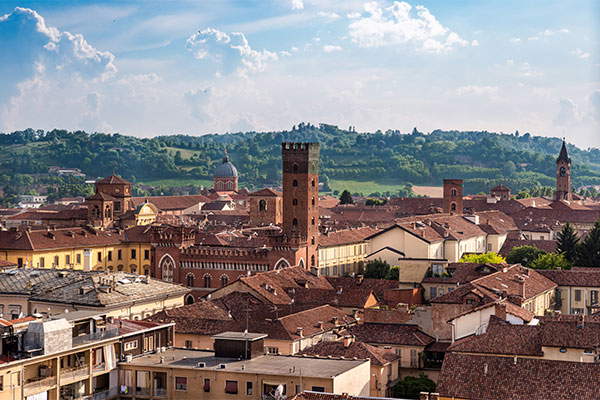
In Alto Monferrato, on a long ridge that follows the left bank of the Tanaro River, opens the village of San Martino Alfieri, named after its church and the noble Asti family. In 1615, by order of the Duke of Savoy, the fief passed to the Alfieri family, which contributed greatly to restoring an important historical and especially viticultural legacy with historic cellars where elegant and timeless wines are produced. But dominating the hillside is the castle built between 1696 and 1721, then reinvented in Baroque style during the 19th century by architect Ernesto Melano first architect to Charles Albert of Savoy and finally transformed in 1815 by Marquis Carlo Emanuele Alfieri who commissioned architect and landscape architect Xavier Kurten to transform the formal garden into a romantic English-style park. The inner courtyard, in fact, is overlooked by the very elegant and dreamy Orangerie, which houses busts of the castle’s most illustrious guests.
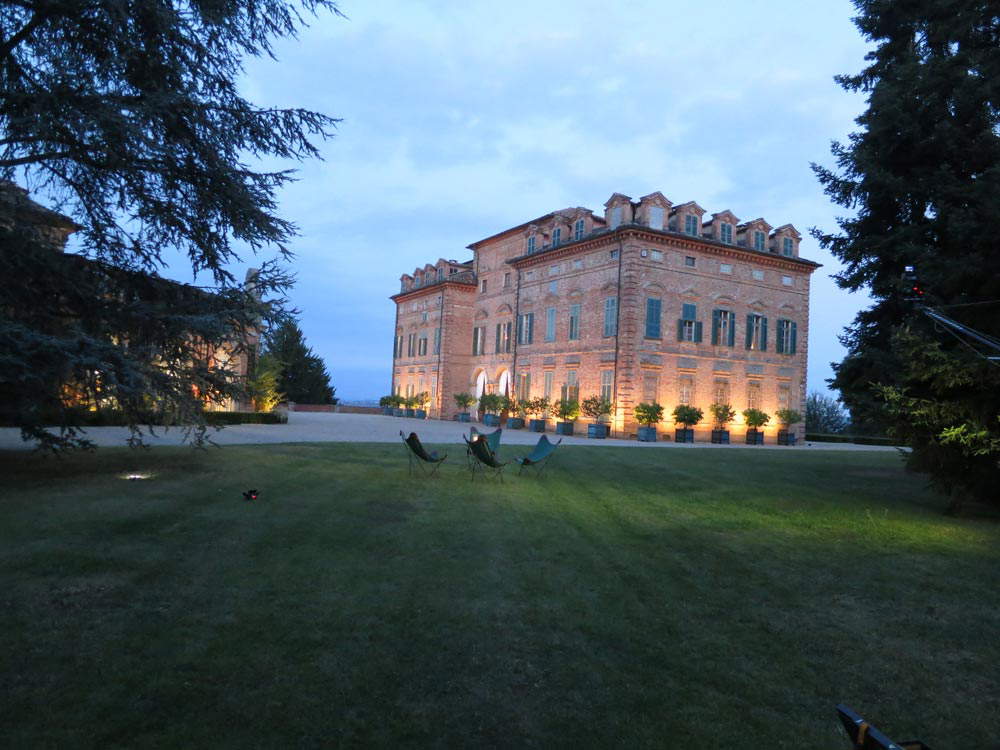
The town of Casale Monferrato is also famous for its majestic fortress dating back to the 12th century, which was reinforced upon the death of Marquis Paleologus, taking on the hexagonal shape that can still be admired today. Later the castle served as a court seat in which the dukes of Mantua often stayed, invited by the Savoy family, but the great and flourishing success met it during the principality of Duke Carlo Gonzaga-Nevers, who gave a considerable boost to the social and cultural life of the area. Unfortunately, however, with the Gonzaga crisis the castle of Casale Monferrato suffered a slow but unstoppable decline and from 1708 it was used as a barracks. Also an interesting stop in Casale Monferrato is the Synagogue built in 1595 and which has undergone countless extensions and renovations over the centuries. Externally it appears bare since, until the Statuto Albertino, Jews were not allowed to insert any decoration on the facade, but as soon as the traveler crosses the entrance door he is fiercely flooded with golds, stuccoes and inscriptions.
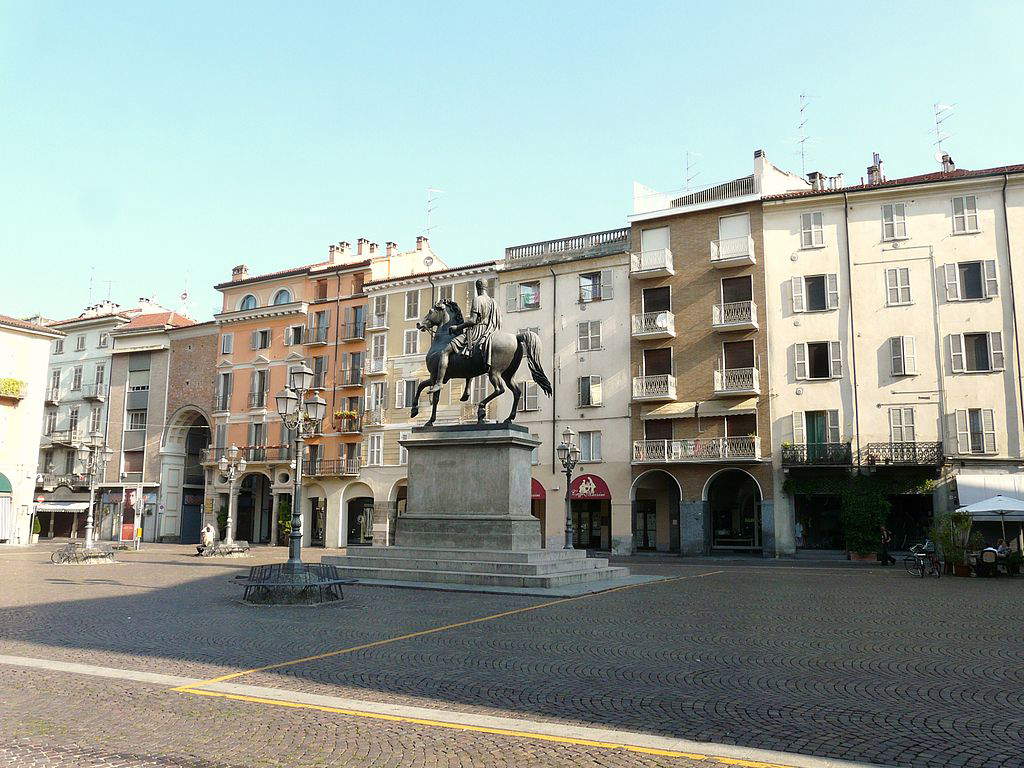
Mostly famous for its vineyards and extremely fine wines, the town of Nizza Monferrato is not only the capital of Barbera, but has always been a key commercial hub thanks to its strategic position with respect to the provinces of Asti and Alessandria. Among its alleys there are numerous testimonies related to the peasant culture as attested, for example, by the Bersano Museum of Farming and Antique Prints, which was strongly desired by the vine-dresser Arturo Bersano, in order to collect all the suffered and sometimes exciting testimonies of the wine-farming culture. This space, also commonly recognized as the “Museum of Know-How,” passionately tells the story of wine and the evolution of thought, tools and various techniques used over time. Inside you can admire the reconstruction of a traditional stone winery and a very large collection of documents, drawings, paintings concerning the world of wine over the past four centuries, edicts, labels, menus and maps.
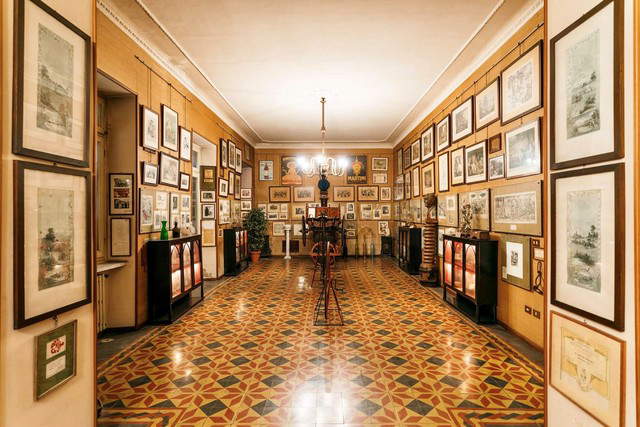
Situated on a scenic hill is the Sacred Mount of Crea, a complex of chapels and shrines and an important pilgrimage destination. It was founded in 1589 on the initiative of the Lateran prior of the Sanctuary of Our Lady of the Assumption, Constantine Maximus, who proposed building an itinerary inspired by the Sacred Mount of Varallo in which pilgrims could pray, meditate and renew their devotion. Unfortunately, over time it too was slowly forgotten until, between 1796 and 1801, raids by French revolutionary troops contributed to the ultimate ruin of some of the structures, statues and frescoes. Fortunately, however, in 1820 a community of Franciscan friars, who became responsible for the shrine, launched a restoration campaign also supported by the bishopric of Milan that lasted until the 1920s.

According to some, the name of the Castle of Uviglie derives from the Latin word ovilia (plural of sheepfold) precisely because of the primitive pastoral organization typical of the area, while others claim that the name derives from the Roman Avilius, who left many traces in this area. What is certain is that the name made its very first appearance in a document dated November 1271, now preserved in the capitular archives of Casale Monferrato. The castle was built around 1322, the year in which a certificate was drawn up in which the Marquis of Monferrato, Teodoro I, granted the Pocaparte family the license “Hedificandi Castrum Ivilie.” To this same period dates the construction of the round tower and the wall supporting the hanging garden, which, with its 56,000 square meters of green area, has been included among the “Historic Gardens of Botanical Interest” of the Piedmont Region. Beneath the halls of the noble wing, on the other hand, are the magniloquent historic cellars similar to underground cathedrals that house the infernot: special structures dug out of the tuff typical of the Monferrato area.

Known for its thermal waters and ancient Roman baths, Acqui Terme has a name derived from the one the Romans gave to the city founded around the hot springs in the 2nd century BC. Thanks to archaeological research, it was discovered that Acqui was a monumental city, with several thermal baths, a theater and amphitheater, an aqueduct and countless commercial emporiums, outlining a profile that was also confirmed by Pliny, who counts them among the best baths in the empire. During the 4th century a major crisis hit Acqui, which managed timidly to survive thanks to the presence of influential bishops, although at the end of the 6th century it was conquered by the Lombards, along with other cities in Piedmont. Its beloved baths, however, never ceased to be used. In the town center, just a few steps from the Cathedral of Santa Maria Assunta, is the Bollente: an octagonal marble aedicule built by architect Giovanni Ceruti in 1879, which was already well known in Roman times as a hot spring and still gushes out at 75° C.
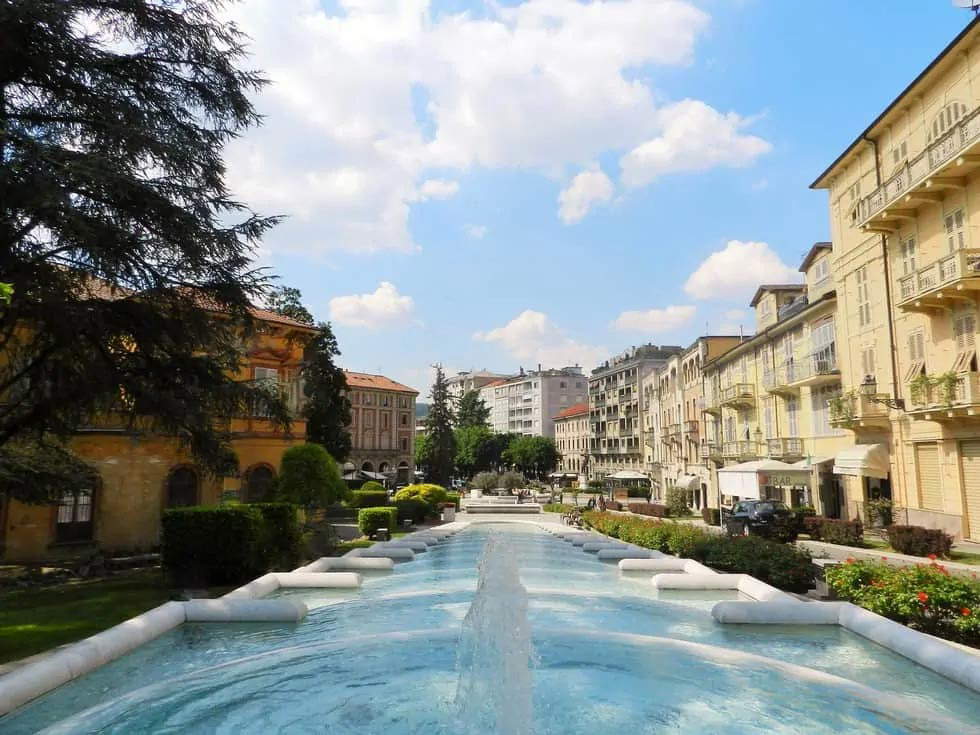
In the heart of the Monferrato region, nestled among endless vineyards, is one of the smallest towns in Italy, dominating the surrounding hills from above and offering the traveler evocative views. The first documents date back to 1270 when, probably, Theodore I Paleologus had his castle built, which was to be one of the main residences of the marquises of Monferrato. During the 16th century, major building interventions such as sumptuous fortifications made the town one of the major strategic centers in all of Monferrato. The tiny town, in addition to telling stories of bygone times at every turn, is also home to the Museo Civico in which works by Guttuso, Chagall, Morandi, Modigliani and other great artists of the 20th century are on display.

Although it may look very old and excellently preserved thanks to a propitious fate, the Castle of Cereseto as we admire it today was rebuilt from the foundations of a pre-existing building in 1912 and its work was protracted for ten years. The project was strongly desired by a wealthy patron and industrialist, Riccardo Gualino, who decided to erect such a structure above the original medieval castle razed to the ground around 1600. Gualino, strongly in love with the project and driven by a great passion, decided not to leave anything to chance and collected priceless furniture from all over Italy and abroad to enrich his very sumptuous new mansion. Its interior, which unfortunately cannot yet be visited, has 153 rooms and within its walls has seen the passage of works by such important artists as Botticelli and Van Dyck.

Decidedly older, however, is the Castle of Gabiano, which was already mentioned in historical sources starting in the 8th century. The scene of sieges and wars, it has seen a succession of Montiglio and Gonzaga families, until Duke Ferdinand of Mantua donated the castle to Agostino Durazzo Pallavicini in 1622, granting him the title of Marquis of Gabiano. Unfortunately, nineteenth-century restoration erased its original appearance as a turreted fortification to give way to a gentler, more sweetened vision, but fortunately by 1907 it was the subject of a very careful restoration commissioned by the two owners Giacomo Durazzo Pallavicini and Matilde Giustiniani. The beating heart of the rigid and austere palace is the sinuous labyrinth designed in the 1930s by architect Lamberto Cusani that recalls the concept of the medieval forest, albeit manipulated and controlled by man.

 |
| Monferrato, what to see: 10 places not to be missed |
Warning: the translation into English of the original Italian article was created using automatic tools. We undertake to review all articles, but we do not guarantee the total absence of inaccuracies in the translation due to the program. You can find the original by clicking on the ITA button. If you find any mistake,please contact us.